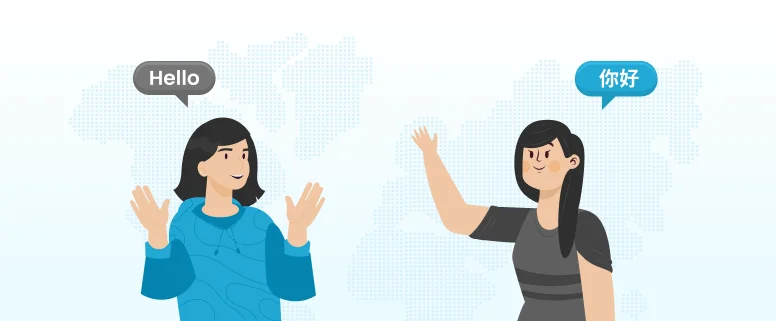When English is not your native language, reading a book can become a miserable experience, especially if you do not have any interest to read in English. A user goes through a similar experience when making an online purchase if the website was not language friendly.
The global audience behaves differently towards each language. Sometimes the expressions intended to be translated in a certain way can be misunderstood by dozens of people. Some ambiguous phrases can rub the audience in the wrong way and lose their meaning. That’s why many companies hire content consultants via professional translation services who are well reversed in a native and foreign language and understand the cultural context and references.
Especially when it’s time to consult with clients, their programs are localized or an interpreter is always present at the backend translating the conference as per requirement.
Impact of language on communication
If you choose your Chinese language content for translation into French and English, this means that you are targeting audiences of three different regions; China, the United States, and France. The impact of multilingual communication is powerful and can bring major traffic to eCommerce sites and in the general market too. This means you just began the game of translation.
One thing that can be easily overlooked is the content for translation. You are well aware of the fact you will need translation services but for what exactly? Is it for a website, product, reviews, or policies?
Before you hit the target audience with a translated version of the content, first your need to identify which type of content needs translation. Establishing a writing style is helpful but what are other factors that work?
Below are some of the practices for preparing content for a flawless translation:
1. Focus on translation
There are four important factors you need to target;
- Style
- Terminology
- Sentence structure
- Target audience
This will help you to know who you are writing for and how to translate the content for the target audience. You need to establish a streamlined translation strategy that is cost-effective and time-efficient too.
If you focus on these factors from the very beginning, you will be well prepared for future projects and you can have a mutual understanding with your translation partner too. It’s vital to highlight the content objectives before the translation process begins.
2. Get familiar with your audience
Can a translation process work without knowing your audience? No!
When you choose the region to launch a product or start a company, you are automatically going native by accepting their culture, traditions, buying patterns, and language of course.
To get the best ROI you need to have a specific locale in your mind. For instance, if you are translating content into Spanish you have to focus on the most Spanish-speaking regions like Spain, South America, and North America, and so on.
Once the region is segmented, you need to create another segment i.e. the type of the reader/customer. The way you plan to engage them with translated content matters. There are two major categories if your product focuses on B2B then the content must be highly informed for which you need subject matter experts. While the second category is from B2C, it’s easier, more lucratively creative, and effective too.
3. Focus on the style guide
It’s a set of rules you need to follow before beginning the translation, like tone and voice that creates brand intimacy. One thing to remember while following a style guide is that it must pitch in favor of the brand.
This will massively improve not only your content but deliver the right message to the right niche as well. Otherwise, it’s too easy to get lost in translation and lose your focus on the target audience and get sidetracked.
4. Use of translation glossary
Most words have synonyms. In some languages, a word may not have an equivalent word because of which translation can become faulty.
It should also be kept in mind that one word can have multiple meanings too. The meaning is changeable concerning the language or culture. For instance, Red color is a symbol of wealth and prosperity in China while in western it is qualified as a sign of danger. Furthermore, the word “screen” would mean television or smartphone for a technology company, while for a life science company it would mean medical examination.
That’s why a translation glossary is a handy tool for translators and marketers. It reduces the ambiguity by focusing on company and audience-specific meanings to avoid misinterpretation.
5. Content must be plain and simple
As said earlier, it’s easy to lose focus while translating content. So when you prepare content, use simple words, instead of complex vocabulary. For instance, using words like “prior to” instead of “before” is an unnecessary intervention that is avoidable.
Stick to simple words and sentences whenever possible. Focus on basic subject, verb, and object to improve your content’s readability in English (it will make translation easier too). All you need to focus on is that the content is precise and understandable before and after the translation.
6. Do not forget about SEO
To target an online audience, you should pay special attention to SEO. The use of appropriate keywords in the content can help rank the website higher and improve your online visibility. Compile a list of keywords (in source and target language) and send them to translators.
Translators will use the targeted keywords in the content for maximum reach. So yes, SEO strategy is always effective to keep the content on-track.
As a professional language service provider, we understand the importance of the flagship content. A good translated content can make an entire difference in the world. A right translation partner can be of great help in your marketing campaigns and cross-cultural communication as well. When it comes to finding the right partner, you will always find CCJK ready to take action.









